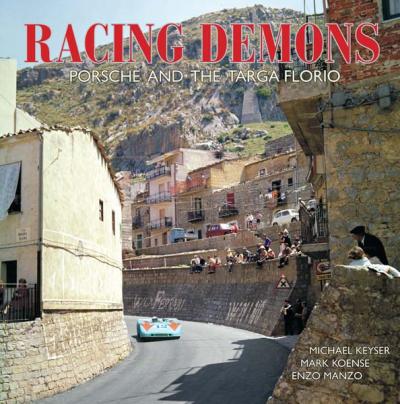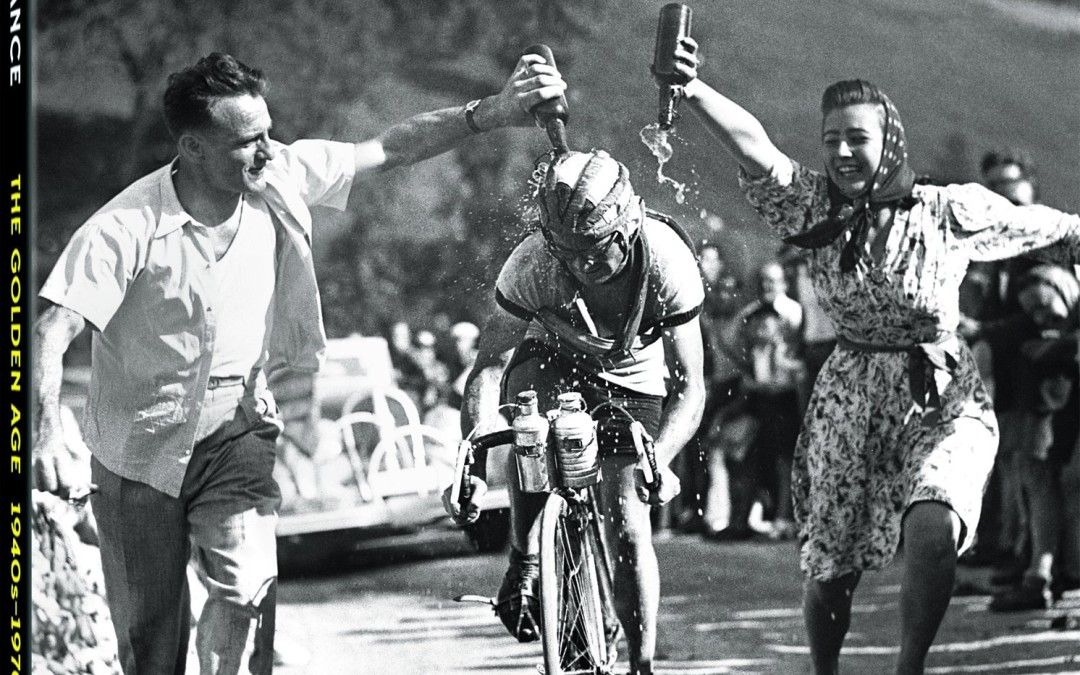
“Eagle of Toledo” and “The Cannibal,” “The Angel of the Mountains” and “Leatherhead.” A sporting event where the heroes earn nicknames like these must be incredibly powerful and alluring. The names reflect the nearly mythical aura surrounding the Tour de France. The men who bore these monikers, Federico Bahamontes and Eddy Merckx, Charly Gaul and Jean Robic, are only some of the protagonists representing the golden era of cycling who appear in this wonderful coffee table book. We see them on their legendary mountain stages, marked by inhuman strain and exertion, and as victors at the finish line, relieved and feted by cheering crowds. As appealing as these pictures from the 1940’s to the 1970’s are, some of their charm comes from the odd detail that makes a contemporary viewer smile: the leather helmet Jean Robic wore (ergo “Leatherhead”), or cyclists repairing and inflating tires themselves. Especially impressive are the photo series of epic duels, such as the one between Jacques Anquetil and Raymond Poulidor. Whether color or black and white, the photographs in this volume have a very special patina that allows the reader to revel in the greatest moments of a race that has enthralled millions of people since 1903.
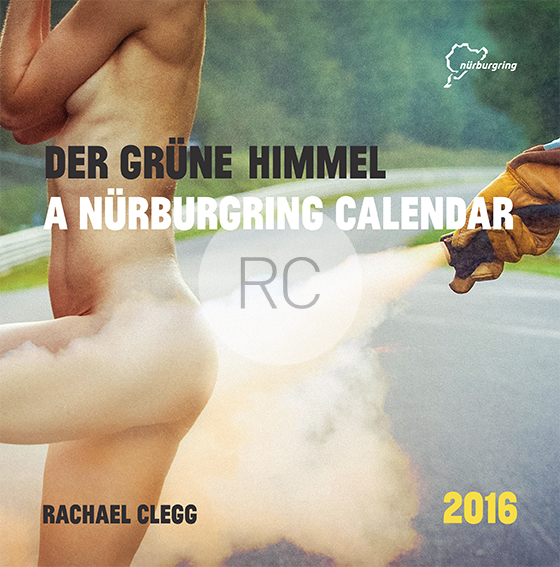
A unique approach to women, calendars and race tracks
British photographer Rachael Clegg’s latest project, Der Grüne Himmel, A Nürburgring calendar 2016. This most magnificent of circuits, nestled in the emerald beauty of the Eifel Mountains, is no more a green hell than it is a green heaven. Highly imaginative photos provide a new insight into the place and its history.
Personalized autographed calendars available. Please email for details.
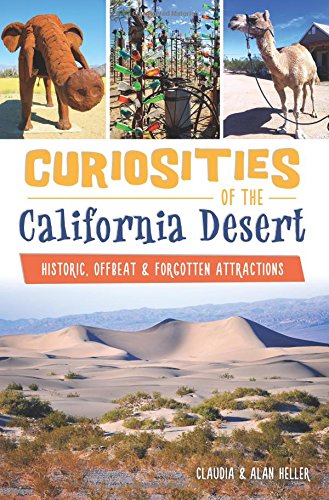
One might not expect to find much in the middle of Californias hot, dry deserts. But to the curious explorer, theyre scattered with strange and extraordinary sights. On old Route 66, the desert traveler can find quirky roadside art and mementos left by motorists. In the El Paso Mountains of the Mojave, the daring adventurer can crawl through a tunnel that was hand dug by an old prospector named Burro Schmidt. In Landers, the weary wanderer can enjoy a rejuvenating sound bath in an acoustically perfect dome supposedly designed by aliens. From astounding natural wonders to remnants of ancient civilizations and the Wild West, discover treasures of history, puzzling mystery and uncommon eccentricity alongside seasoned road trippers Alan and Claudia Heller.
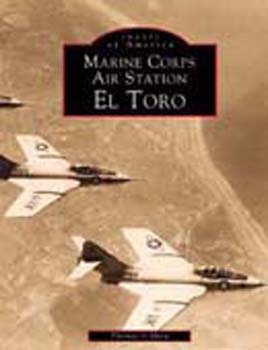
In 1943, the finishing touches on El Toro’s construction turned a bean field into one of the country’s finest military air stations. Located in a quiet valley at the base of the Saddleback Mountains and only a few miles from the Pacific Ocean, Marine Corps Air Station El Toro stood proud and tall on behalf of the U.S. military for 57 years and four wars. In this publication dedicated to the history of the Marine Corps Air Station (MCAS) El Toro, with a sub-section covering MCAS Tustin, Thomas O’Hara presents a detailed account of the installation’s achievements and activities during the entire period of its service to the U.S. military. Over 200 images—from photos of the first Woman Reserve Officers in 1943 to documentation of the annual airshow—illustrate the base’s history from its role in World War II through Desert Storm.
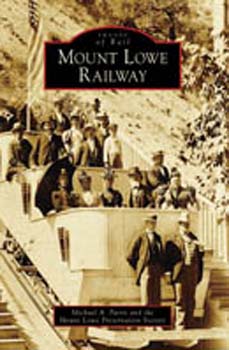
“Opened with great fanfare on July 4, 1893, the Mount Lowe Incline Railway was hailed as “Earth’s Grandest Mountain Ride.” Built by Civil War balloonist Thaddeus S. C. Lowe and railroad engineer David J. Macpherson in the mountains above Altadena and Pasadena in Los Angeles County, this funicular was operated for 43 years and served nearly four million passengers from around the world. Where else could one find four hotels, an observatory, the world’s largest searchlight, a dance hall, miniature golf, a zoo, horseback riding, tennis, and snow capped peaks, all within a day’s journey from the Pacific Ocean and downtown Los Angeles? The San Gabriel Mountains continue to be a great natural resource and recreational escape for many Angelenos, but the spectacular railway lives on only in these vintage photographs.
”

Pitting man and machine against the most challenging natural and manmade elements, this roller-coaster ride takes six cars across six continents to bring you some of the most spectacular car journeys in the world.
From a Smart in Russia to a Ferrari over the mountains of Ecuador, this rollicking combination of bravery, jeopardy, and yes—stupidity, will take you across polar planes in a pick-up truck; up sand dunes in a Toyota Land Cruiser, along remote and rugged coastlines, into the Australian outback; and through the gates of Dracula’s castle in a Mercedes-Benz. You’ll drive in fast cars, cool cars, inappropriate cars, tiny cars, and some very expensive cars in Top Gear’s road trips of a lifetime. Twenty spectacular behind-the-wheel adventures will be irresistible to anyone who dreams of heading for the horizon with a scorch of the tires in a cloud of dust.
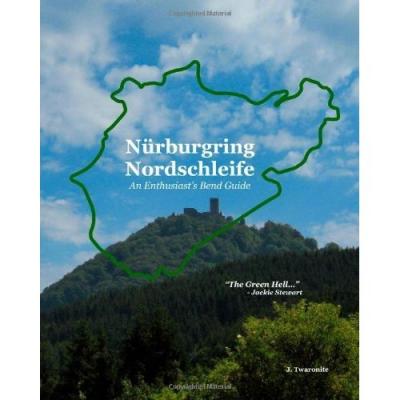
Turn-by-turn guide to Jackie Stewart’s infamous Grune Holle (Green Hell) – der Nurburgring Nordschleife, including full color aerial images of the entire 20.832 km circuit. Updated 2nd Edition now shows the ideal line. Built in 1927, high in the Eifel Mountains around the ancient village and castle of Nuburg, the exceptionally long Nurburgring was originally conceived to provide a showcase for Germany’s auto racing talent. For 50 years, ‘Ring fever continued to grew, and the Nordschleife (the northern loop) would become the most famous Grand Prix circuit in history. Sadly, Grand Prix racing ended forever on the ‘ring when suspension failure on Nikki Lauda’s Ferrari led to his terrifying crash in the 2nd lap of the ’76 German Grand Prix. But today, any licensed driver with a road-legal car or motorcycle can still experience Jackie Stewart’s infamous Grune Holle for only 22 Euro each lap.
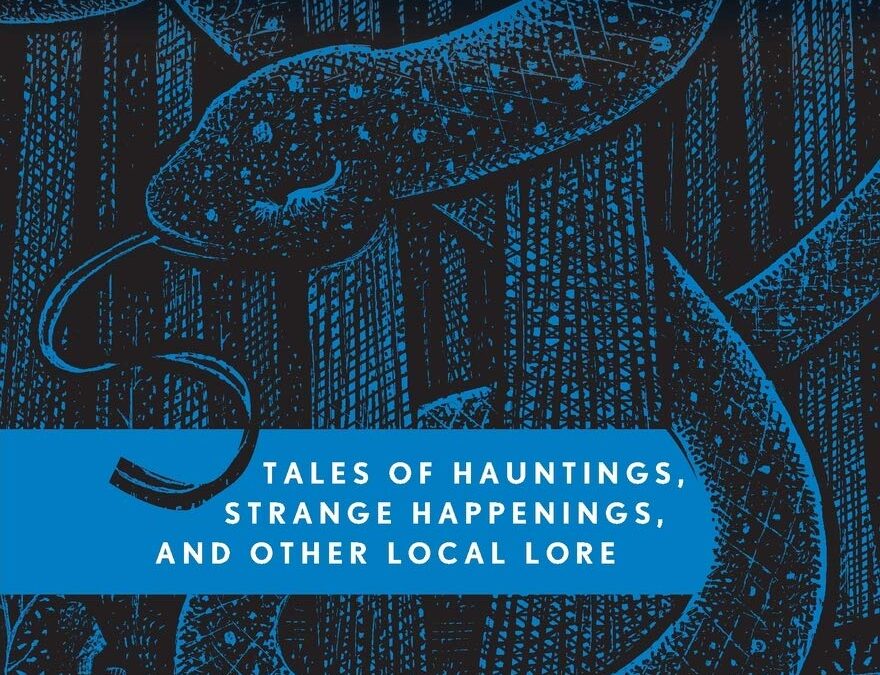
Pull up a chair or gather round the campfire and get ready for thirty creepy tales of ghostly hauntings, eerie happenings, and other strange occurrences in California. Set in the Golden State’s big cities, ocean side towns, rugged mountains, and sparsely populated deserts, the stories in this entertaining and compelling collection will have readers looking over their shoulders again and again.
California’s folklore is kept alive in these expert re-tellings by master storyteller S. E. Schlosser and in artist Paul Hoffman’s evocative illustrations. Readers will meet the Queen of Death Valley, cheer on the ghost who haunts his claim-jumping murderer, look out for a blood-hungry rolling head, learn about the sea monster of Monterey Bay Canyon, and hear otherworldly voices from the Pacific Ocean–or simply feel an icy wind on the back of their necks on a warm California evening. Whether read around the campfire on a dark and stormy night or from the backseat of the family van on the way to grandma’s, this is a collection to treasure.
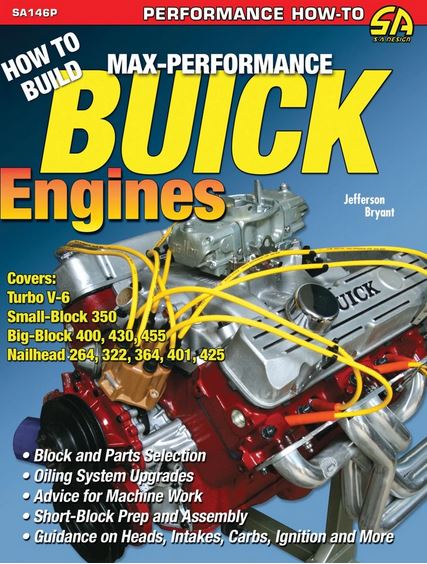
Skylarks, GSXs, Grand Nationals, Rivieras, Gran Sports; the list of formidable performance Buicks is impressive. From the torque monsters of the 1960s to the high-flying Turbo models of the ’80s, Buicks have a unique place in performance history.
During the 1960s, when word of the mountains of torque supplied by the big-inch Buicks hit the street, nobody wanted to mess with them. Later, big-inch Buicks and the Hemi Chryslers went at it hammer and tongs in stock drag shootouts and in the pages of the popular musclecar magazines of the day. The wars between the Turbo Buicks and Mustang GTs in the 1980s were also legendary, as both cars responded so well to modifications.
How to Build Max-Performance Buick Engines is the first performance engine book ever published on the Buick family of engines. This book covers everything from the Nailheads of the ’50s and early ’60s, to the later evolutions of the Buick V-8 through the ’60s and ’70s, through to the turbo V-6 models of the ’70s and ’80s. Veteran magazine writer and Buick owner Jefferson Bryant supplies the most up-to-date information on heads, blocks, cams, rotating assemblies, interchangeability, and oiling-system improvements and modifications, along with details on the best performance options available, avenues for aftermarket support, and so much more. Finally, the Buick camp gets the information they have been waiting for, and it’s all right here in How to Build Max-Performance Buick Engines.
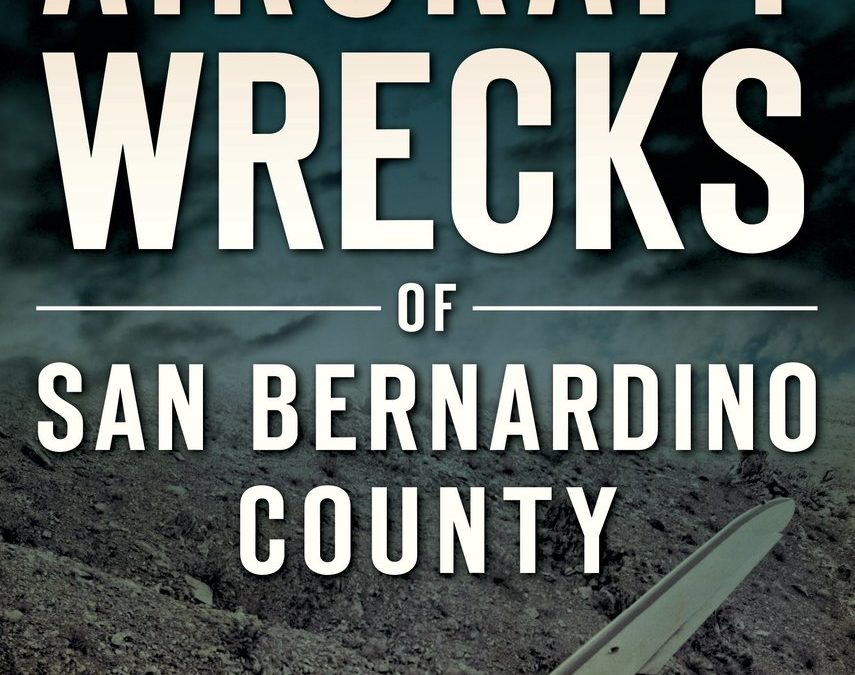
Weather, darkness and twists of fate have contributed to more than three hundred airplane crashes in San Bernardino County, California. Many of these accidents occurred in the vast Mojave Desert, others on the cloud-shrouded, snow-capped mountains of the largest county in the lower forty-eight states. Searches often were labored yet fruitless, even for the privileged: Frank Sinatra’s mother perished here in a downed plane. The quest for an aircraft containing $5,000 in cash has become the stuff of legend. Tales of survival in uninhabited, rugged landscapes have been especially harrowing. Join renowned aircraft-crash search specialist G. Pat Macha for dozens of sorrowful, triumphant, touching and surprising true stories of those who lived through the ordeals of plane crashes–and others who didn’t.
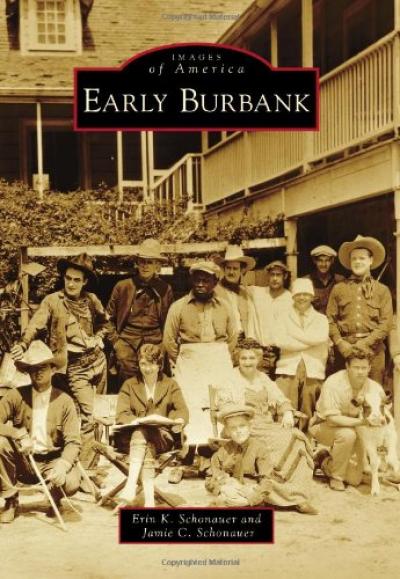
Burbank is an innovator, a world traveler a city with artistic flair and creativity. From the entertainment industry taking up residence in the early 20th century to the Lockheed Aircraft Company opening shop in 1928, Burbank’s masterpieces have transcended the coasts. Films shot on Burbank back lots and streets have entertained audiences worldwide. Lockheed planes built on Burbank soil flew across the world with the likes of Amelia Earhart and Charles Lindbergh. Once a robust farming community, Burbank, founded on May 1, 1887, and later incorporated as a city on July 8, 1911, dons its name from Dr. David Burbank, a New Hampshire born dentist who, in 1867, bought over 9,000 acres of land amid the sun-kissed foothills of the Verdugo Mountains land that was awaiting creative cultivation.
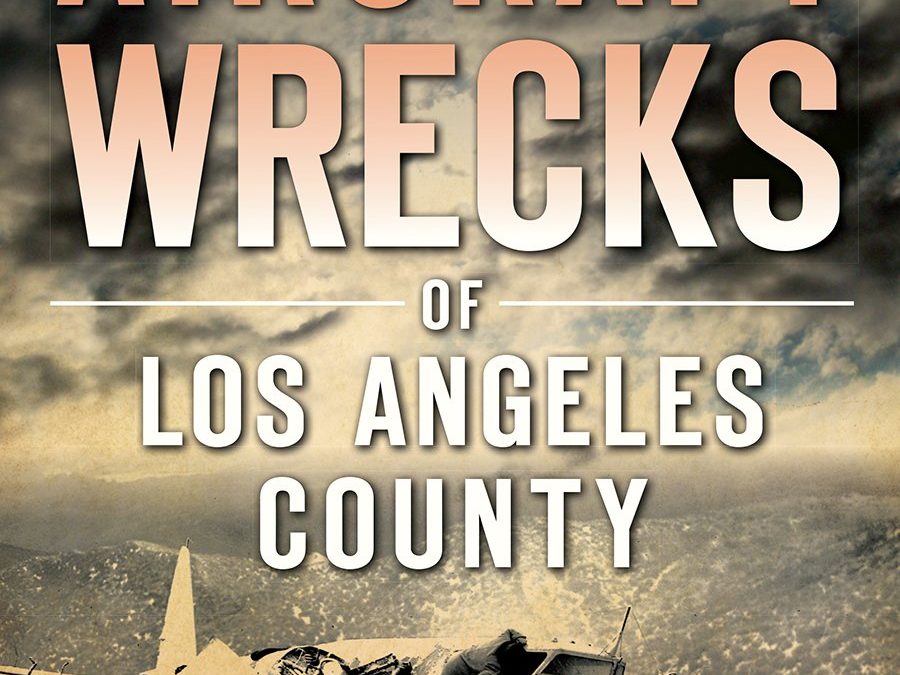
A century of aviation research and military flights over Los Angeles County has left the San Gabriel Mountains, Mojave Desert and the near-shore Pacific Ocean strewn with more than 1,500 aircraft crash sites. Barnstormers and test pilots too often made unexpected final landings. Accidents occurred on a nearly daily basis during World War II training maneuvers. Private planes, a sign of 1950s prosperity, also met tragic ends. These epic incidents include the 1971 tragedy of Flight 706 in which an airliner collided with a marine fighter jet above Mount Bliss, killing fifty people. Renowned aircraft crash search specialist G. Pat Macha recounts dozens of sorrowful, triumphant and surprising true stories of those who lived through these ordeals while offering touching tributes to those who did not.

A lively, literary and extraordinary visual look at the symbiotic and highly smbolic relationship between the Golden State and its ‘golden apple’. Untold thousands of adventurers and health-seekers came West in the late 19th and early 20th centuries, lured by postcards of orange blossoms on now-capped mountains. The orange became a symbol of everything California promised, and California became the centre of the Orange Empire. Author David Boule shares the absorbing story of the orange and its impact on the culture of California.











